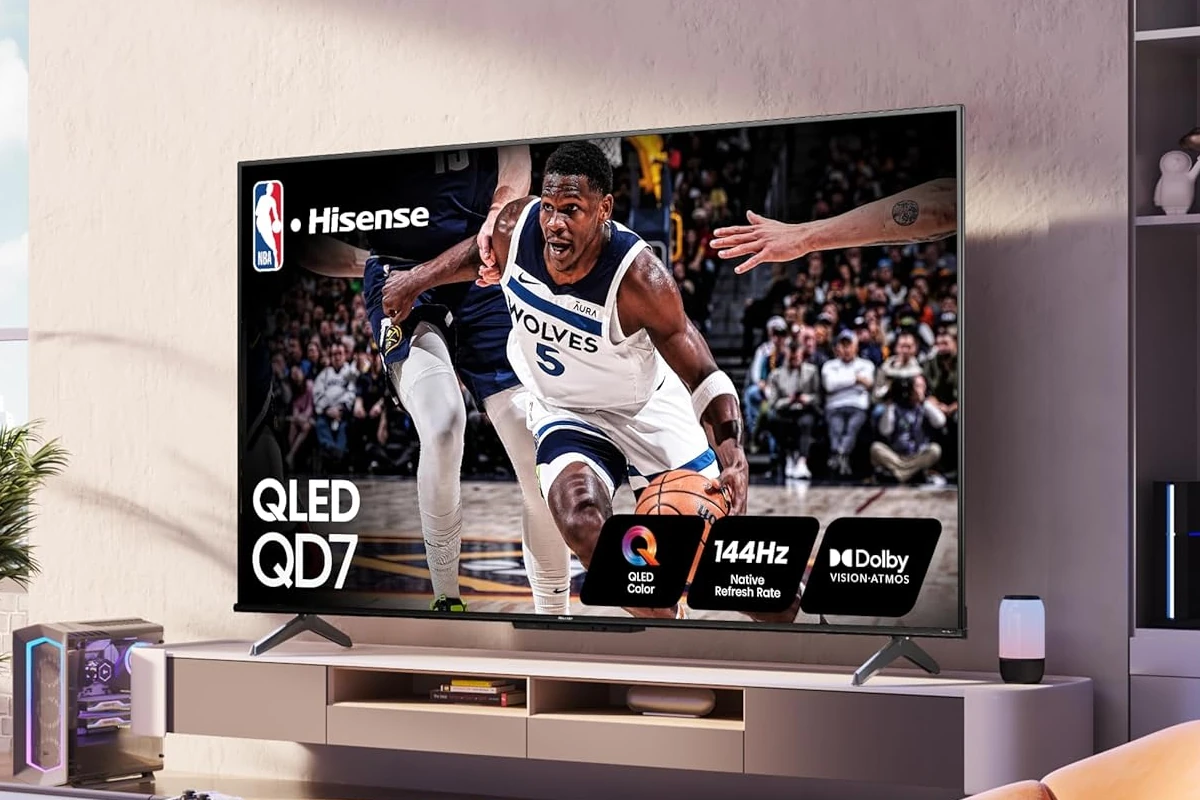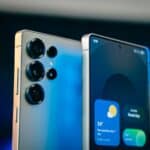Looking for a new TV? Hisense has gained popularity as a budget-friendly alternative to premium brands. Many shoppers wonder if these affordable televisions can deliver quality performance for their price point.
Hisense TVs offer good quality for their price, with higher-end models like the U8/U8N series providing excellent picture quality that rivals more expensive brands. Their QLED models feature decent contrast ratios and perform well in dark rooms. The brand has improved significantly in recent years, offering features typically found in TVs costing much more.
Quality control can be an issue with Hisense, as some users report minor problems with their sets. However, most reviews indicate that the value proposition is strong, especially for budget-conscious consumers who want modern features like 4K resolution and smart TV capabilities without breaking the bank.
Is Hisense a Good TV Brand in 2026?
Short answer: Yes — Hisense TVs are generally good, especially for the price. In 2026, Hisense continues to offer impressive display technology and smart features that rival more expensive brands like Samsung, LG, and Sony. However, reliability and quality control can vary depending on the model and series.
⚙️ 1. Performance & Picture Quality
✅ Strengths
- Mini-LED and QLED Panels: Hisense’s premium lines (like the U8N and U9N series) use advanced Mini-LED backlighting, offering deep contrast, excellent brightness, and vibrant colors comparable to top-tier TVs.
- High Brightness: Many models exceed 1,500 nits peak brightness, making them ideal for bright rooms.
- Dolby Vision & HDR10+ Support: Hisense supports nearly all major HDR formats — a big plus for movie lovers.
- Gaming Features: HDMI 2.1 ports, 120Hz refresh rates, VRR, and low input lag make Hisense TVs great for next-gen gaming.
⚠️ Weaknesses
- Motion Handling: Some mid-range models struggle with motion smoothing and judder during fast-paced scenes.
- Viewing Angles: Like most VA panels, Hisense TVs lose contrast when viewed off-center.
Expert verdict: According to RTINGS’ 2025 reviews, models like the Hisense U8N and U75QG deliver “excellent peak brightness and contrast for their price” (RTINGS).
🧩 2. Smart TV Platform
Hisense uses two main platforms:
- Google TV (in most global markets)
- Roku TV (in select U.S. models)
Both systems are fast, intuitive, and app-rich. Google TV offers deeper integration with Google Assistant, while Roku remains simpler and more user-friendly.
🛠️ 3. Reliability & Build Quality
This is where Hisense’s reputation is mixed.
- Positive: Many users report years of solid performance with no issues.
- Negative: Some owners on Reddit and review sites mention panel uniformity issues, banding, and early backlight failures — more common in budget models (Reddit).
- Warranty: Hisense offers a standard 1-year warranty, but service quality varies by region.
Summary: Build quality has improved significantly since 2020, but quality control inconsistencies still occur, especially in cheaper models.
💰 4. Value for Money
Hisense’s biggest strength is price-to-performance ratio.
- A $700 Hisense TV often rivals $1,200 models from Samsung or Sony.
- Their ULED and Mini-LED lines deliver flagship-level specs at mid-range prices.
If you’re budget-conscious but still want premium features, Hisense offers some of the best deals in 2026.
🔍 5. Best Hisense TVs to Consider in 2026
| Model | Type | Best For | Highlights |
|---|---|---|---|
| Hisense U9N | Mini-LED | Home theater enthusiasts | 4,000+ dimming zones, 2,000+ nits brightness |
| Hisense U8N | Mini-LED | All-around performance | Excellent HDR, gaming-ready |
| Hisense U7N | QLED | Gamers & streamers | HDMI 2.1, 120Hz panel |
| Hisense A7 Series | LED | Budget buyers | Solid 4K performance, basic smart features |
(Source: RTINGS 2025 review, Tom’s Guide)
⚖️ 6. Pros & Cons Summary
Pros
- Excellent picture quality for the price
- Bright, colorful displays with strong HDR
- Great gaming features
- Wide smart TV compatibility
Cons
- Inconsistent quality control
- Limited viewing angles on some models
- Average sound quality (external soundbar recommended)
- Customer service can be hit or miss
🧠 Final Verdict: Should You Buy a Hisense TV in 2026?
✅ Buy it if:
You want premium features like Mini-LED, Dolby Vision, and HDMI 2.1 without paying top-tier prices.
❌ Skip it if:
You prioritize long-term reliability or want the absolute best motion and color accuracy (consider LG OLED or Samsung Neo QLED instead).
Overall Rating (2026): ⭐ 4.3 / 5
Best for: Value seekers, gamers, and movie lovers on a budget.
Sources:
- RTINGS – Hisense TV Reviews 2025
- Tom’s Guide – Are Hisense TVs Worth Buying?
- ConsumerAffairs – Hisense TV Reviews 2025
- Techanoa – Are Hisense TVs Reliable?
Key Takeaways
- Hisense offers excellent value with high-end models delivering premium features at significantly lower prices than competing brands.
- Picture quality on Hisense QLED TVs is impressive with good contrast ratios, making them suitable for various viewing environments.
- While occasional quality control issues exist, most users find Hisense smart TVs provide a satisfying viewing experience with modern connectivity options.
Technical Specifications and Performance
Hisense TVs deliver impressive technical specifications that power their performance in both everyday viewing and specialized uses like gaming. Their latest models feature advanced display technologies and connectivity options that compete with higher-priced brands.
Visual Excellence in Hisense TVs
Hisense TVs showcase excellent picture quality across their lineup, with the U8N model standing out as one of their best performers. These TVs deliver exceptional brightness levels in both HDR and SDR content, making them suitable for well-lit rooms. The U7K series, for example, offers fantastic reflection handling that enhances the viewing experience regardless of lighting conditions.
Many Hisense models feature quantum dot technology that produces vibrant, accurate colors. This technology helps create a wider color gamut, resulting in more lifelike images. The contrast capabilities are particularly notable, with deep black levels that rival more expensive competitors.
Resolution options include 4K UHD across most models, with some premium sets supporting various HDR formats for enhanced dynamic range. When compared to Samsung’s QLED TVs, Hisense offers similar visual performance at a more accessible price point.
Gaming on Hisense TVs
Gamers will appreciate Hisense’s commitment to gaming-friendly features. Many models include HDMI 2.1 ports that support advanced gaming functions like Variable Refresh Rate (VRR) and Auto Low Latency Mode (ALLM).
The refresh rate on premium Hisense TVs reaches 120Hz, allowing for smoother motion in fast-paced games. This is particularly valuable for competitive gaming where frame rates matter. Input lag measurements are impressively low, with some models achieving under 15ms in game mode.
Recent Hisense TVs also support various gaming technologies:
- AMD FreeSync compatibility on select models
- 4K gaming at 120Hz capability on premium sets
- Game Mode Pro for optimized gaming settings
For console gamers using PlayStation 5 or Xbox Series X, Hisense’s HDMI 2.1 implementation ensures they can experience games at their full potential with 4K resolution and high frame rates simultaneously.
Smart Features and Connectivity
Hisense TVs come equipped with a variety of smart features and connectivity options that enhance the viewing experience. The brand has invested significantly in creating intuitive interfaces while ensuring compatibility with popular streaming services and external devices.
Integrated Streaming Capabilities
Hisense smart TVs typically run on either Android TV, Google TV, or the company’s proprietary VIDAA operating system. These platforms give users access to thousands of apps through their respective app stores. Popular streaming services like Netflix, Hulu, Disney+, and Amazon Prime Video come pre-installed on most models.
The user interface is generally responsive and easy to navigate. However, some users have reported issues with connectivity in older models, as mentioned in the search results where some features were disabled on certain TVs.
Most new Hisense models support voice control through Google Assistant or Alexa, allowing users to search for content, change inputs, or adjust settings without using the remote.
Enhancing Your TV Experience
Hisense TVs offer several ways to connect external devices. All models feature multiple HDMI ports, with higher-end versions including HDMI 2.1 for gaming consoles. They also support Bluetooth connectivity for headphones and soundbars.
The SmartCast app allows users to control their TV from a smartphone or tablet. This feature is particularly useful for streaming content from mobile devices or entering text without the remote.
For audio enhancement, Hisense TVs easily pair with external sound systems. Many models include optical audio outputs and HDMI ARC/eARC for simplified connections to soundbars.
Customer support for smart features is available through Hisense’s website and Best Buy’s technical support for purchased units. However, response times and service quality can vary according to user reviews.
Frequently Asked Questions
Consumers often have specific concerns when considering a Hisense TV purchase. These questions address performance, reliability, and value comparisons that shoppers typically want to know before making a decision.
How do Hisense TVs compare to other leading brands like Samsung?
Hisense TVs generally offer comparable features to premium brands at lower price points. While Samsung may excel in processing power and motion handling, Hisense provides competitive picture quality, especially in their mid to high-end models.
The value proposition is Hisense’s strongest selling point. Their U8/U8N series, for example, delivers performance that rivals more expensive options from established brands.
Smart platform functionality on Hisense TVs has improved significantly, though some users find Samsung’s Tizen interface more intuitive and responsive.
What are common issues consumers encounter with Hisense televisions?
Panel uniformity problems appear in some user reports, with inconsistent backlighting being mentioned in budget models. Some users note software glitches requiring occasional TV restarts.
Remote control responsiveness issues emerge in customer reviews. Additionally, some models experience audio sync problems when connected to external sound systems.
Longevity concerns exist among some consumers, though many Reddit users report their Hisense TVs performing well beyond the warranty period.
Are Hisense TVs considered to be of high quality for home entertainment?
Hisense’s premium models like the U8 series receive excellent reviews for picture quality and brightness. Their QLED and ULED technologies deliver vibrant colors and good contrast ratios suitable for movie watching.
Mid-range Hisense TVs offer solid performance for everyday viewing. The brand has significantly improved quality control in recent years, enhancing their reputation among consumers.
For basic streaming and casual viewing, even budget Hisense models provide satisfactory performance with 4K resolution and decent smart features.
Which model of Hisense TV is currently recognized as the best for gaming?
The Hisense U8N series stands out for gaming with its 144Hz refresh rate, HDMI 2.1 ports, and VRR support. Its low input lag measurements make it highly responsive for competitive gaming.
The U7N models also perform well for gamers on a tighter budget. They offer many gaming features of the higher-end models with only minor compromises in peak brightness.
Gaming-specific features like Auto Low Latency Mode and Game Mode Pro enhance the experience across most current Hisense models.
How do professional reviews rate Hisense TVs, particularly the 55-inch models?
According to RTINGS.com, the 55-inch Hisense U8/U8N received excellent ratings for overall picture quality. Professional reviewers praise its brightness handling and value proposition compared to similarly sized premium TVs.
HDR performance in 55-inch models impresses most reviewers. The mini-LED backlighting in higher-end models delivers impressive contrast and black levels.
Color accuracy out of the box varies by model, though most 55-inch options offer adequate calibration settings for enthusiasts who want to fine-tune their picture.
In terms of value for money, how do Hisense TVs stand against other smart TVs in the market?
Hisense consistently ranks as one of the best value-for-money TV brands. Their strategy of offering premium features at mid-range prices gives consumers access to technologies previously only available in more expensive sets.
When comparing similar specifications, Hisense TVs typically cost 15-30% less than equivalent models from top-tier brands. This price advantage doesn’t necessarily indicate inferior quality.
Feature-for-feature comparisons often favor Hisense, particularly in screen size and resolution per dollar spent. Consumers get more screen real estate and better specs for the same budget compared to many competitors.






